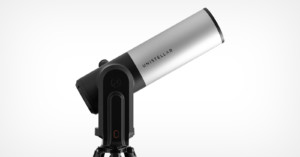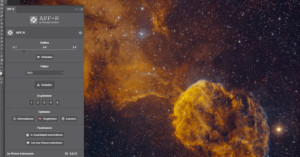
NASA Streams Cat Video From Deep Space
NASA has streamed a high definiton video of a cat from deep space to Earth -- a distance of almost 20 million miles away -- using laser technology.

NASA has streamed a high definiton video of a cat from deep space to Earth -- a distance of almost 20 million miles away -- using laser technology.

Astrophotography. We hear the term tossed around a lot these days but what actually is it? The true definition of the word is photography of the nighttime sky. The sky only—at night.

The James Webb Space Telescope has reached another major milestone in its mirror alignment process as the team has successfully worked through the second and third phases of the process and completed Segment Alignment.

The James Webb Space Telescope is currently in the midst of the months-long mirror calibration process before it starts to capture in-focus images, but NASA has released the first photo it took that verifies it is in great working condition.

The camera system on the James Webb Space Telescope is fully online and operational, and NASA has begun the process of aligning the mirrors so that it can begin to capture its first photos.

Self-described astronomy disruptor telescope brand Unistellar has announced what it calls the world's most powerful and simple to operate digital telescope for consumers - the eVscope 2.

Picture Instruments, a Germany-based software company known best for its plugins for Adobe Photoshop and Lightroom Classic, has released a new plugin that promises to create clean, detailed, ultra-sharp images with incredible depth by employing a technique used by the Hubble Space Telescope team.

The folks at French startup Vaonis recently put their robotic camera telescope Stellina through its most intense test yet: capturing a 208,000-photo mosaic of the night sky, without any need for human input or astrophotography expertise. The result is breathtaking.

Hubble turned 30 years old this month. Well, actually, the space telescope celebrated 30 years in orbit, but either way, NASA took the opportunity to celebrate this milestone by capturing a spectacular, never-before-scene view that they're calling a "tapestry of blazing starbirth."

Astrophotography is one of the more difficult and expensive genres of photography you can get hooked on, especially if you want to capture deep space imagery. But a new robotic camera/star-tracker/telescope called Stellina wants to change all that.

The Royal Observatory Greenwich has revealed the winners of the prestigious Insight Investment Astronomy Photographer of the Year 2019 competition, and as always, the winning images are spectacular.

In their seemingly never-ending effort to amaze us mere mortals, NASA has released yet another jaw-dropping Ultra Deep Field image. The above image is a composite created from only the best of the images captured between 2003–2012 by the cameras aboard the Hubble Space Telescope.

Infrared imagery has shown its value in many different respects: from keeping an eye on photosynthesis to lending a new perspective on a decades-long humanitarian disaster. But did you know that the future of outer space imagery also lies in infrared technology?
The James Webb Space Telescope, which is set to launch in 2018, is an infrared telescope that is primed to see much further than even Hubble ever could, piercing into the furthest reaches of our cosmos and answering questions we may not have even thought to ask yet.